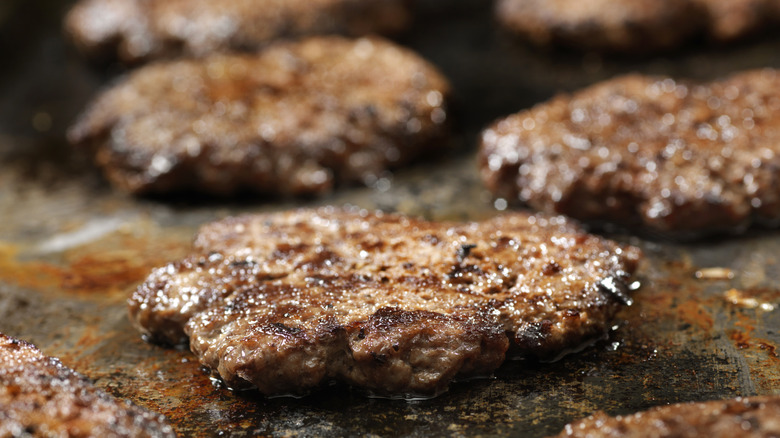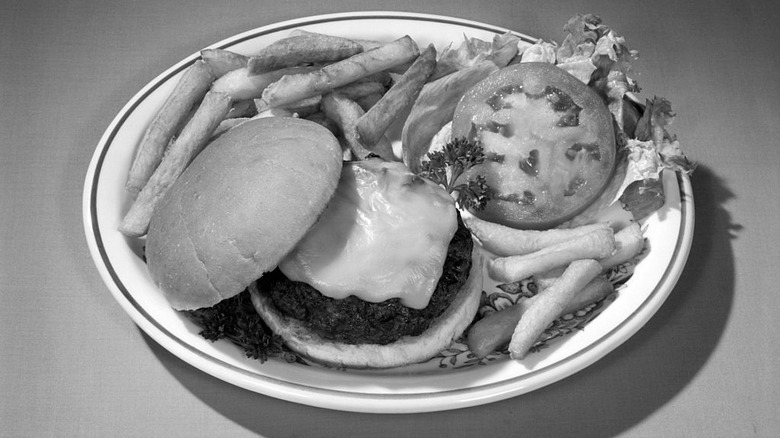A New York Restaurant Is Showcasing What Hamburgers Used To Taste Like
Americans have been chomping down on burgers for more than 100 years, but the burgers of the past tasted different than they do today. Now, thanks to one man, these age-old recipes are no longer lost to history. Enter burger scholar George Motz, a history enthusiast and researcher with distinctively bushy muttonchop sideburns. He's written entire books, hosted TV shows, and even taught a university class about burgers and their origins.
It's safe to say he knows a thing or two about burgers and their history. Starting in the summer of 2023, he's spearheading Hamburger America, a restaurant in New York dedicated to burgers gone by. In addition to period-appropriate drinks like milk, egg cream, and fresh-squeezed lemonade, Hamburger America's menu has three historic burgers.
The first is the century-old Oklahoma-style fried onion burger; onions, in fact, were the first burger topping. These burgers date all the way back to the Great Depression. The second is a smashburger with onion, pickle, and mustard — and no ketchup, since that condiment didn't become popular on burgers till the 1940s. The third burger will be a regional specialty that'll rotate monthly. In fact, Motz says he already has the first two years of his restaurant's menu planned.
Sadly, it's impossible to replicate the true taste of mid-century burgers
While George Motz's attempt is noble, it will still be difficult to make a burger exactly like someone did 100 years ago. Like many classic foods, the history of the hamburger is shrouded in mystery, and there's plenty that people get wrong. In fact, we might have ancient Romans to thank for a version of the first meat patty — made with pepper, wine, and pine nuts. This is certainly a different flavor profile from modern burgers, which were popularized at the 1904 St. Louis World's Fair.
But even when recipes survive, a list of ingredients doesn't guarantee you'll be able to reproduce the same flavors. Many foods taste different now than they did centuries or even decades ago. Take a tomato, for example, a classic burger topping. Today, tomatoes are less sweet and have a less nuanced flavor than they did years ago. Why? The crops have been modified to last longer in storage, at the expense of delicate aromatic compounds. The beef is not the same, either. Compared with two generations ago, cattle are harvested younger — but produce more meat — pointing to the industrialized feeding regimens that produce cheap meat but sacrifice flavor and quality.
To be sure, recreating historical burger recipes — like any retro recipes that deserve comebacks — will likely yield delicious results. But sadly, the flavors will not be identical to the burgers our great-grandparents enjoyed. Still, Motz is making sure these old-school ways of cooking find new audiences.

